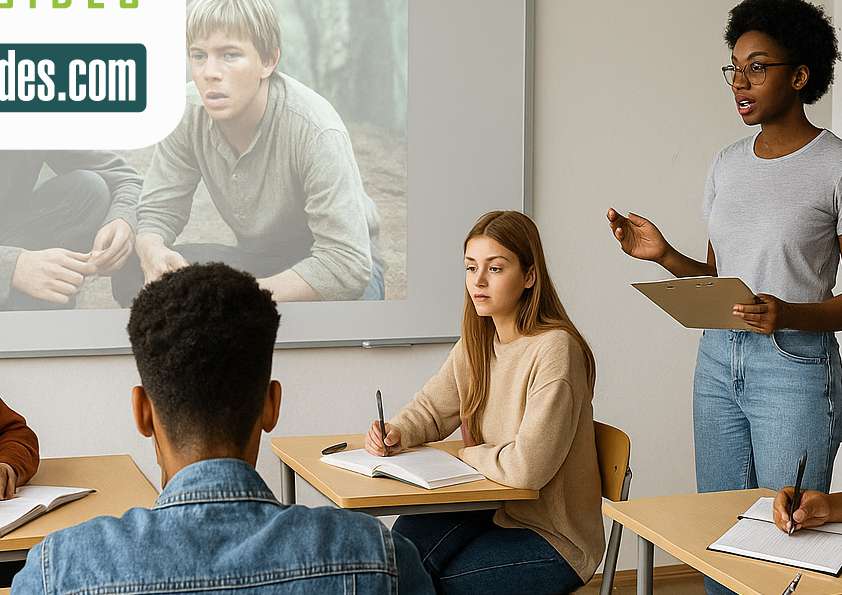
Teaching English ELA with a Film as Literature Curriculum
Share
Can movies transform an English Language Arts (ELA) classroom? Yes—when you treat film as literature and pair it with robust production analysis. In this post you’ll see how our year-long Film as Literature & Cinematic Arts curriculum leverages 45 carefully chosen titles to hit every Common Core strand—reading, writing, speaking-listening, and language—while building media-literacy skills often reserved for college-level film studies and cinema studies programs.
- Key Takeaway #1: Eight themed units cover dystopias, heroes, war, biographies, classics, and Shakespeare.
- Key Takeaway #2: 45 movie guides, 23 comparative analyses, and 10 summatives keep rigor high all year.
- Key Takeaway #3: Ready-made pacing guides, workshops, and Google-ready files cut prep to minutes.
Why Use Movies to Teach ELA?
Films combine text, image, and sound—making them ideal for analyzing plot structure, symbolism, and character development. Unlike a traditional “History of Movies” class, this curriculum balances literary interpretation with production techniques. Students learn how camera angles, color palettes, and editing choices change the way a story feels—skills that align with CCRA.R.7 and today’s multimedia literacy standards.Semester-by-Semester Breakdown
Semester 1 (Quarters 1-2)
Nine-week blocks move from dystopian intrigue (The Giver, 1984) to heroic underdogs (The Karate Kid, Rudy) and finally to classic and modern blockbusters (Casablanca, Avatar). Students complete 23 movie guides, 10 comparative analyses, and five summative assessments while mastering logline writing and three-act plot mapping.Semester 2 (Quarters 3-4)
The spring term starts with wartime resilience (Midway, 1917) and inspiring biographies (Lincoln, Hamilton), then closes with literary classics (The Odyssey, The Outsiders) and Shakespeare on screen (Romeo + Juliet, Hamlet). Students produce 22 movie guides, 11 comparative analyses, and five summatives, plus workshops in cinematography and thematic symbolism.Lesson Ideas and Classroom Activities
Pre-Viewing Anticipation Prompts
Use a quick “Agree/Disagree” poll on themes such as conformity (1984) or heroism (Rudy). Students predict how the film might address each statement.During-Viewing Discussion Stops
Pause at key turning points—e.g., the cornfield reveal in The Maze Runner—and ask: “How does camera movement shape suspense?” This ties directly to the cinematography workshop.Post-Viewing Projects
- Create a comparative infographic showing how Fahrenheit 451 and The Giver depict censorship.
- Storyboard an alternate ending to Romeo + Juliet using the three-act template.